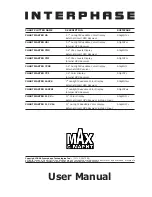
1-1 TM106601_(7/01)
USE OR DISCLOSURE OF DATA CONTAINED ON THIS PAGE IS SUBJECT TO THE
RESTRICTION ON THE TITLE PAGE OF THIS DOCUMENT
.
C
O M M A N D
S
Y S T E M S
D
I V I S I O N
1.1 GENERAL
The Telephonics RDR-1600 Weather and Search and Rescue Radar System provides six primary
modes of operation: three air-to-surface search and detection modes, two radar weather avoidance
modes, and one navigational beacon mode. The navigational beacon has the capability to receive and
decode both standard 2-pulse and DO-172 6-pulse transponders.
The Telephonics RDR-1600 Weather and Search and Rescue Radar System are primarily designed
for fixed and rotary wing aircraft engaged in patrol, search and rescue missions, and for transporting
personnel and equipment to remote sites (off-shore oil rigs, etc.).
1.1.1 Basic System Functions
The RDR-1600 Radar System consists of three flight-line replaceable units (LRU): a Receiver-
Transmitter (RT), Radar Control Panel (CP), and an Antenna Drive unit with antenna (DA). In
addition to the above LRUs, additional equipment (not supplied by Telephonics) is necessary to
operate the radar system. This additional equipment includes one or two Multifunction Displays
(MFD) which are necessary to display the radar data, modes of operation and controls. For antenna
stabilization, a gyro or Attitude Heading Reference System (AHRS) system is required.
The beacon mode requires that a tight tolerance magnetron be employed in the Receiver Transmitter for
reliable interrogation of beacon transponders. Also, special circuitry is incorporated in the Receiver
Transmitter unit to optimize the receiver portion to process narrow bandwidth weather targets.
All system controls are located on either the Radar Control Panel or the EFIS Display Unit. The
Radar Display Unit provides search gain, beacon gain, mode of operation, and antenna tilt control.
The EFIS Display Unit provides range information. Only one Radar Control Panel can be used in the
RDR-1600 radar system, but two EFIS displays can be employed. This will allow the pilots to select
gain, mode and tilt on the control panel. Different range values can be selected on each display for
the pilot and for the co-pilot.
The presentation of data on the MFD will vary from manufacturer to manufacturer. Refer to the
MFD manufacturer for the exact presentation of data on the display. In general, the MFD display
shall display in text format the modes of operation, beacon code selected, fault codes, antenna tilt,
search gain, and beacon gain. The range rings, range ring markers in nautical miles, and target data
shall be displayed in graphical format.
Built-in-test (BIT) circuits provide rapid checkout of system performance in the air or on the ground.
A TEST function, as selected on the radar control panel, is a user - initiated BIT to validate the
system operation. The RDR-1600 radar system runs Continuous BIT to detect a fault within the
system. If a fault should occur within the system, then a fault will be displayed in all modes of
operation.
















































